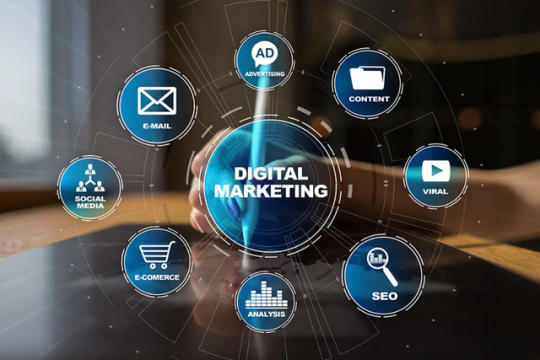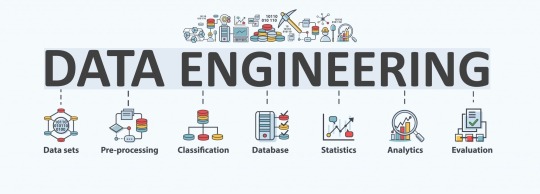#API Testing Market Challenges
Explore tagged Tumblr posts
Text
API Testing Market Projected to Show Strong Growth

Global API Testing Market Report from AMA Research highlights deep analysis on market characteristics, sizing, estimates and growth by segmentation, regional breakdowns & country along with competitive landscape, player’s market shares, and strategies that are key in the market. The exploration provides a 360° view and insights, highlighting major outcomes of the industry. These insights help the business decision-makers to formulate better business plans and make informed decisions to improved profitability. In addition, the study helps venture or private players in understanding the companies in more detail to make better informed decisions. Major Players in This Report Include, Astegic (United States), Axway (United States), Bleum (China), CA Technologies (United States), Cigniti Technologies (India), Cygnet Infotech (India), IBM (United States), Inflectra Corporation (United States), Infosys (India), Load Impact (Sweden). Free Sample Report + All Related Graphs & Charts @: https://www.advancemarketanalytics.com/sample-report/114161-global-api-testing-market API testing is a type of software testing that involves testing of a set of application programming interfaces (APIs) directly and as part of integration testing to determine if they meet expectations for functionality, performance, reliability, and security. It is a formal specification that acts as a guaranteed contract between two separate pieces of software. The automation for API testing requires less code so it can provide faster and better test coverage. It helps the companies to reduce the risks. Market Drivers
Rise In the Cloud Applications and Interconnect Platforms
Increasing Adoption of API Testing
Market Trend
Data Regulations and Policies
Opportunities
Increasing Requirements of Modern Testing Methods
Advancements in the Testing Technologies
Challenges
Lack of Awareness among the People
Enquire for customization in Report @: https://www.advancemarketanalytics.com/enquiry-before-buy/114161-global-api-testing-market In this research study, the prime factors that are impelling the growth of the Global API Testing market report have been studied thoroughly in a bid to estimate the overall value and the size of this market by the end of the forecast period. The impact of the driving forces, limitations, challenges, and opportunities has been examined extensively. The key trends that manage the interest of the customers have also been interpreted accurately for the benefit of the readers. The API Testing market study is being classified by Type (Automated Testing {Functionality Testing, Reliability Testing, Load Testing, Security Testing, Creativity Testing, Proficiency Testing and Others}, Manual Testing {Exploratory Testing, Usability Testing and Ad-hoc Testing}), Application (IT and Telecommunication, Banking, Financial Services, and Insurance, Retail and Ecommerce, Media and Entertainment, Healthcare, Manufacturing, Government, Others), Deployment (Cloud-Based, On-Premises) The report concludes with in-depth details on the business operations and financial structure of leading vendors in the Global API Testing market report, Overview of Key trends in the past and present are in reports that are reported to be beneficial for companies looking for venture businesses in this market. Information about the various marketing channels and well-known distributors in this market was also provided here. This study serves as a rich guide for established players and new players in this market. Get Reasonable Discount on This Premium Report @ https://www.advancemarketanalytics.com/request-discount/114161-global-api-testing-market Extracts from Table of Contents API Testing Market Research Report Chapter 1 API Testing Market Overview Chapter 2 Global Economic Impact on Industry Chapter 3 Global Market Competition by Manufacturers Chapter 4 Global Revenue (Value, Volume*) by Region Chapter 5 Global Supplies (Production), Consumption, Export, Import by Regions Chapter 6 Global Revenue (Value, Volume*), Price* Trend by Type Chapter 7 Global Market Analysis by Application ………………….continued This report also analyzes the regulatory framework of the Global Markets API Testing Market Report to inform stakeholders about the various norms, regulations, this can have an impact. It also collects in-depth information from the detailed primary and secondary research techniques analyzed using the most efficient analysis tools. Based on the statistics gained from this systematic study, market research provides estimates for market participants and readers. Contact US : Craig Francis (PR & Marketing Manager) AMA Research & Media LLP Unit No. 429, Parsonage Road Edison, NJ New Jersey USA – 08837 Phone: +1 201 565 3262, +44 161 818 8166 [email protected]
#Global API Testing Market#API Testing Market Demand#API Testing Market Trends#API Testing Market Analysis#API Testing Market Growth#API Testing Market Share#API Testing Market Forecast#API Testing Market Challenges
0 notes
Text
Revolutionizing DeFi Development: How STON.fi API & SDK Simplify Token Swaps

The decentralized finance (DeFi) landscape is evolving rapidly, and developers are constantly seeking efficient ways to integrate token swap functionalities into their platforms. However, building seamless and optimized swap mechanisms from scratch can be complex, time-consuming, and risky.
This is where STON.fi API & SDK come into play. They provide developers with a ready-to-use, optimized solution that simplifies the process of enabling fast, secure, and cost-effective swaps.
In this article, we’ll take an in-depth look at why developers need efficient swap solutions, how the STON.fi API & SDK work, and how they can be integrated into various DeFi applications.
Why Developers Need a Robust Swap Integration
One of the core functions of any DeFi application is token swapping—the ability to exchange one cryptocurrency for another instantly and at the best possible rate.
But integrating swaps manually is not a straightforward task. Developers face several challenges:
Complex Smart Contract Logic – Handling liquidity pools, slippage, and price calculations requires expertise and rigorous testing.
Security Vulnerabilities – Improperly coded swaps can expose user funds to attacks.
Performance Issues – Slow execution or high gas fees can frustrate users and hurt adoption.
A poorly integrated swap feature can turn users away from a DeFi application, affecting engagement and liquidity. That’s why an efficient, battle-tested API and SDK can make a significant difference.
STON.fi API & SDK: What Makes Them a Game-Changer?
STON.fi has built an optimized API and SDK designed to handle the complexities of token swaps while giving developers an easy-to-use toolkit. Here’s why they stand out:
1. Seamless Swap Execution
Instead of manually routing transactions through liquidity pools, the STON.fi API automates the process, ensuring users always get the best swap rates.
2. Developer-Friendly SDK
For those who prefer working with structured development tools, the STON.fi SDK comes with pre-built functions that remove the need for extensive custom coding. Whether you’re integrating swaps into a mobile wallet, trading platform, or decentralized app, the SDK simplifies the process.
3. High-Speed Performance & Low Costs
STON.fi’s infrastructure is optimized for fast transaction execution, reducing delays and minimizing slippage. Users benefit from lower costs, while developers get a plug-and-play solution that ensures a smooth experience.
4. Secure & Scalable
Security is a major concern in DeFi, and STON.fi’s API is built with strong security measures, protecting transactions from vulnerabilities and ensuring reliability even under heavy traffic.
Practical Use Cases for Developers
1. Building Decentralized Exchanges (DEXs)
STON.fi API enables developers to integrate swap functionalities directly into their DEX platforms without having to build custom liquidity management solutions.
2. Enhancing Web3 Wallets
Crypto wallets can integrate STON.fi’s swap functionality, allowing users to exchange tokens without leaving the wallet interface.
3. Automating Trading Strategies
The API can be used to build automated trading bots that execute swaps based on real-time market conditions, improving efficiency for traders.
4. Scaling DeFi Platforms
For DeFi applications handling high transaction volumes, STON.fi API ensures fast and cost-effective execution, improving user retention.
Why Developers Should Consider STON.fi API & SDK
For developers aiming to create efficient, user-friendly, and scalable DeFi applications, STON.fi offers a robust solution that eliminates the complexities of manual integrations.
Saves Development Time – Reduces the need for custom swap coding.
Improves Security – Pre-tested smart contracts minimize vulnerabilities.
Enhances User Experience – Faster swaps create a smoother, more reliable platform.
Optimizes Performance – Low latency and cost-efficient execution ensure better outcomes.
Whether you’re working on a new DeFi project or improving an existing platform, STON.fi’s API & SDK provide a solid foundation to enhance functionality and scalability.
By leveraging STON.fi’s tools, developers can focus on building innovative features, rather than getting caught up in the technical challenges of token swaps.
3 notes
·
View notes
Text
Top 10 In- Demand Tech Jobs in 2025

Technology is growing faster than ever, and so is the need for skilled professionals in the field. From artificial intelligence to cloud computing, businesses are looking for experts who can keep up with the latest advancements. These tech jobs not only pay well but also offer great career growth and exciting challenges.
In this blog, we’ll look at the top 10 tech jobs that are in high demand today. Whether you’re starting your career or thinking of learning new skills, these jobs can help you plan a bright future in the tech world.
1. AI and Machine Learning Specialists
Artificial Intelligence (AI) and Machine Learning are changing the game by helping machines learn and improve on their own without needing step-by-step instructions. They’re being used in many areas, like chatbots, spotting fraud, and predicting trends.
Key Skills: Python, TensorFlow, PyTorch, data analysis, deep learning, and natural language processing (NLP).
Industries Hiring: Healthcare, finance, retail, and manufacturing.
Career Tip: Keep up with AI and machine learning by working on projects and getting an AI certification. Joining AI hackathons helps you learn and meet others in the field.
2. Data Scientists
Data scientists work with large sets of data to find patterns, trends, and useful insights that help businesses make smart decisions. They play a key role in everything from personalized marketing to predicting health outcomes.
Key Skills: Data visualization, statistical analysis, R, Python, SQL, and data mining.
Industries Hiring: E-commerce, telecommunications, and pharmaceuticals.
Career Tip: Work with real-world data and build a strong portfolio to showcase your skills. Earning certifications in data science tools can help you stand out.
3. Cloud Computing Engineers: These professionals create and manage cloud systems that allow businesses to store data and run apps without needing physical servers, making operations more efficient.
Key Skills: AWS, Azure, Google Cloud Platform (GCP), DevOps, and containerization (Docker, Kubernetes).
Industries Hiring: IT services, startups, and enterprises undergoing digital transformation.
Career Tip: Get certified in cloud platforms like AWS (e.g., AWS Certified Solutions Architect).
4. Cybersecurity Experts
Cybersecurity professionals protect companies from data breaches, malware, and other online threats. As remote work grows, keeping digital information safe is more crucial than ever.
Key Skills: Ethical hacking, penetration testing, risk management, and cybersecurity tools.
Industries Hiring: Banking, IT, and government agencies.
Career Tip: Stay updated on new cybersecurity threats and trends. Certifications like CEH (Certified Ethical Hacker) or CISSP (Certified Information Systems Security Professional) can help you advance in your career.
5. Full-Stack Developers
Full-stack developers are skilled programmers who can work on both the front-end (what users see) and the back-end (server and database) of web applications.
Key Skills: JavaScript, React, Node.js, HTML/CSS, and APIs.
Industries Hiring: Tech startups, e-commerce, and digital media.
Career Tip: Create a strong GitHub profile with projects that highlight your full-stack skills. Learn popular frameworks like React Native to expand into mobile app development.
6. DevOps Engineers
DevOps engineers help make software faster and more reliable by connecting development and operations teams. They streamline the process for quicker deployments.
Key Skills: CI/CD pipelines, automation tools, scripting, and system administration.
Industries Hiring: SaaS companies, cloud service providers, and enterprise IT.
Career Tip: Earn key tools like Jenkins, Ansible, and Kubernetes, and develop scripting skills in languages like Bash or Python. Earning a DevOps certification is a plus and can enhance your expertise in the field.
7. Blockchain Developers
They build secure, transparent, and unchangeable systems. Blockchain is not just for cryptocurrencies; it’s also used in tracking supply chains, managing healthcare records, and even in voting systems.
Key Skills: Solidity, Ethereum, smart contracts, cryptography, and DApp development.
Industries Hiring: Fintech, logistics, and healthcare.
Career Tip: Create and share your own blockchain projects to show your skills. Joining blockchain communities can help you learn more and connect with others in the field.
8. Robotics Engineers
Robotics engineers design, build, and program robots to do tasks faster or safer than humans. Their work is especially important in industries like manufacturing and healthcare.
Key Skills: Programming (C++, Python), robotics process automation (RPA), and mechanical engineering.
Industries Hiring: Automotive, healthcare, and logistics.
Career Tip: Stay updated on new trends like self-driving cars and AI in robotics.
9. Internet of Things (IoT) Specialists
IoT specialists work on systems that connect devices to the internet, allowing them to communicate and be controlled easily. This is crucial for creating smart cities, homes, and industries.
Key Skills: Embedded systems, wireless communication protocols, data analytics, and IoT platforms.
Industries Hiring: Consumer electronics, automotive, and smart city projects.
Career Tip: Create IoT prototypes and learn to use platforms like AWS IoT or Microsoft Azure IoT. Stay updated on 5G technology and edge computing trends.
10. Product Managers
Product managers oversee the development of products, from idea to launch, making sure they are both technically possible and meet market demands. They connect technical teams with business stakeholders.
Key Skills: Agile methodologies, market research, UX design, and project management.
Industries Hiring: Software development, e-commerce, and SaaS companies.
Career Tip: Work on improving your communication and leadership skills. Getting certifications like PMP (Project Management Professional) or CSPO (Certified Scrum Product Owner) can help you advance.
Importance of Upskilling in the Tech Industry
Stay Up-to-Date: Technology changes fast, and learning new skills helps you keep up with the latest trends and tools.
Grow in Your Career: By learning new skills, you open doors to better job opportunities and promotions.
Earn a Higher Salary: The more skills you have, the more valuable you are to employers, which can lead to higher-paying jobs.
Feel More Confident: Learning new things makes you feel more prepared and ready to take on tougher tasks.
Adapt to Changes: Technology keeps evolving, and upskilling helps you stay flexible and ready for any new changes in the industry.
Top Companies Hiring for These Roles
Global Tech Giants: Google, Microsoft, Amazon, and IBM.
Startups: Fintech, health tech, and AI-based startups are often at the forefront of innovation.
Consulting Firms: Companies like Accenture, Deloitte, and PwC increasingly seek tech talent.
In conclusion, the tech world is constantly changing, and staying updated is key to having a successful career. In 2025, jobs in fields like AI, cybersecurity, data science, and software development will be in high demand. By learning the right skills and keeping up with new trends, you can prepare yourself for these exciting roles. Whether you're just starting or looking to improve your skills, the tech industry offers many opportunities for growth and success.
#Top 10 Tech Jobs in 2025#In- Demand Tech Jobs#High paying Tech Jobs#artificial intelligence#datascience#cybersecurity
2 notes
·
View notes
Text
Best IT Courses In Bhubaneswar:- seeree services pvt ltd.
Introduction:- seeree is one of the best IT training institute and Software industry, features completely Industrial training on Python , PHP , .NET , C Programming,Java , IOT , AI , GD PI , ORACLE and ALL CERTIFICATION COURSES as well as provides seminar,cultural activity and jobs
Courses we provided:- 1) Java Fullstack 2) Python Fullstack 3) PHP Fullstack 4) Preplacement Training & Sp. Eng 5) .NET Fulstack 6) SEO/Digital Marketing 7) SAP 8) MERN 9) Software Testing 10)Data Analyst 11)Data Science 12)Data Engineering 13)PGDCA 14)Tally 15)Graphics Design
Course1:- Java Fullstack

A Class in Java is where we teach objects how to behave. Education at seeree means way to success. The way of teaching by corporate trainers will bloom your career. We have the best java training classes in Bhubaneswar. 100% Placement Support. Job Support Post Training. This course will give you a firm foundation in Java, commonly used programming language. Java technology is wide used currently. Java is a programming language and it is a platform. Hardware or software environment in which a program runs, known as a platform. Since Java has its own Runtime Environment (JRE) and API, it is called platform. Java programming language is designed to meet the challenges of application development in the context of heterogeneous, network-wide distributed environment. Java is an object-oriented programming (OOP) language that uses many common elements from other OOP languages, such as C++. Java is a complete platform for software development. Java is suitable for enterprise large scale applications.]
Course2:- Python Fullstack

Seeree offers best python course in Bhubaneswar with 100% job assurance and low fee. Learn from real time corporate trainers and experienced faculties. Groom your personality with our faculty. Seeree helps to build confidence in students to give exposure to their skills to the company.
Python is dynamically typed , compiled and interpreted , procedural and object oriented , generalized , general-purpose , platform independent programming language. Python is a high-level, structured, open-source programming language that can be used for a wide variety of programming tasks.
Course3:- PHP Fullstack

seeree is the best training institute which provide PHP Training courses in bhubaneswar and all over odisha We aim the students to learn and grow altogether with the need of IT firms.
PHP is a server scripting language, and a powerful tool for making dynamic and interactive Web pages. PHP is a widely-used, free, and efficient alternative to competitors such as Microsoft's ASP.
Course4:- Preplacement Training & Sp. Eng

Welcome to SEEREE Institute, where excellence meets opportunity. At SEEREE, we are dedicated to providing a transformative learning experience that empowers students to achieve their goals and contribute to a brighter future.
Our institute offers cutting-edge courses designed to meet the needs of the ever-evolving global landscape. With a team of highly qualified instructors and state-of-the-art facilities, we ensure a supportive and inspiring environment for learning and growth.
Whether you're here to develop new skills, explore innovative fields, or pursue personal and professional success, SEEREE Institute is the perfect place to begin your journey. Thank you for choosing us, and we look forward to being a part of your success story.
Course5:- .NET Fullstack

Seeree offers best .NET course in Bhubaneswar with 100% job assurance and low fee. Learn from real time corporate trainers and experienced faculties. Groom your personality with our faculty. Seeree helps to build confidence in students to give exposure to their skills to the company.
Course6:- SEO/Digital Marketing

In today's fast-paced digital world, businesses thrive on visibility, engagement, and strategic online presence. At SEEREE, we empower you with the skills and knowledge to master the art of Search Engine Optimization (SEO) and Digital Marketing.
Our comprehensive program is designed for beginners and professionals alike, covering everything from keyword research, on-page and off-page SEO, and content marketing, to social media strategies, PPC campaigns, and analytics.
With hands-on training, real-world projects, and guidance from industry experts, we ensure you're equipped to drive measurable results and excel in this dynamic field.
Join us at SEEREE Institute and take the first step towards becoming a leader in the digital marketing landscape!"
Course7:- SAP

SAP refers to Systems, Applications, and Products in Data Processing. Some of the most common subjects covered in these courses include human resource software administration, database management, and business training. Obtaining SAP certification can be done on a stand-alone basis or as part of a degree program.
Course8:- MERN

Seeree offers the best MERN course in Bhubaneswar with 100% job assurance and low fees. Learn from real-time corporate trainers and experienced faculty. Seeree helps students build confidence and gain skills to excel in company roles.
Are you ready to step into the exciting world of web development? At SEEREE, we bring you a comprehensive MERN Stack course that equips you with the skills to build modern, dynamic, and responsive web applications from start to finish.
The MERN Stack—comprising MongoDB, Express.js, React.js, and Node.js—is one of the most sought-after technologies in the web development industry. Our program is designed to help you master each component of the stack, from creating robust backends and managing databases to crafting dynamic frontends and seamless APIs.
Course9:- Software Testing

Seeree offers best Testing course in Bhubaneswar with 100% job assurance and low fee. Learn from real time corporate trainers and experienced faculties. Groom your personality with our faculty. Seeree helps to build confidence in students to give exposure to their skills to the company.
In the fast-paced world of software development, ensuring the quality and reliability of applications is crucial. At SEEREE, we offer a comprehensive Software Testing course designed to equip you with the skills and techniques needed to excel in this essential field.
Our program covers all aspects of software testing, from manual testing fundamentals to advanced automation tools and frameworks like Selenium, JIRA, and TestNG. You’ll learn to identify bugs, write test cases, execute test scripts, and ensure software meets high-quality standards.
With hands-on training, real-world scenarios, and guidance from experienced industry professionals, you’ll be prepared to take on roles like Quality Assurance Engineer, Test Analyst, and Automation Tester.
Join SEEREE Institute and gain the expertise to become a key player in delivering flawless software solutions. Your journey to a rewarding career in software testing starts here!"
Course10:- Data Analyst

Seeree offers the best Data Analyst course in Bhubaneswar with 100% job assurance and affordable fees. Our comprehensive curriculum is designed to cover all aspects of data analysis, from data collection and cleaning to advanced data visualization techniques. Learn from real-time corporate trainers and experienced faculty members who bring industry insights into the classroom. Enhance your analytical skills and boost your career prospects with hands-on projects and real-world case studies. Our faculty also focuses on grooming your personality and soft skills, ensuring you are well-prepared for interviews and workplace environments. Seeree is dedicated to building confidence in students, providing them with the necessary exposure to showcase their skills to top companies in the industry.
Course11:- Data Science

Seeree offers the best Data Science course in Bhubaneswar with 100% job assurance and affordable fees. Our comprehensive curriculum is designed to cover all aspects of data science, from data collection and cleaning to advanced data visualization techniques. Learn from real-time corporate trainers and experienced faculty members who bring industry insights into the classroom. Enhance your analytical skills and boost your career prospects with hands-on projects and real-world case studies. Our faculty also focuses on grooming your personality and soft skills, ensuring you are well-prepared for interviews and workplace environments. Seeree is dedicated to building confidence in students, providing them with the necessary exposure to showcase their skills to top companies in the industry.
Course12:- Data Engineering

In the era of big data, the ability to design, build, and manage scalable data infrastructure is one of the most in-demand skills in the tech industry. At SEEREE, we are proud to offer a comprehensive Data Engineering course that prepares you for a career at the forefront of data-driven innovation.
Our program covers essential topics such as data modeling, ETL processes, data warehousing, cloud platforms, and tools like Apache Spark, Kafka, and Hadoop. You’ll learn how to collect, organize, and transform raw data into actionable insights, enabling businesses to make smarter decisions.
With real-world projects, expert mentorship, and hands-on experience with the latest technologies, we ensure that you are industry-ready. Whether you’re starting fresh or upskilling, this program will empower you to unlock opportunities in the rapidly growing field of data engineering.
Join SEEREE Institute and take the first step toward building the data pipelines that power tomorrow’s technology!"
Course13:- PGDCA

Seeree offers the best MERN course in Bhubaneswar with 100% job assurance and low fees. Learn from real-time corporate trainers and experienced faculty. Seeree helps students build confidence and gain skills to excel in company roles.
In today’s digital age, computer applications are at the heart of every industry, driving innovation and efficiency. At SEEREE Institute, our Post Graduate Diploma in Computer Applications (PGDCA) program is designed to provide you with in-depth knowledge and hands-on skills to excel in the IT world.
This program offers a comprehensive curriculum covering programming languages, database management, web development, software engineering, networking, and more. Whether you aim to enhance your technical expertise or step into a rewarding career in IT, PGDCA at SEEREE equips you with the tools to succeed.
With expert faculty, state-of-the-art labs, and real-world projects, we ensure that you gain practical experience and a strong theoretical foundation. By the end of the program, you’ll be prepared for roles such as software developer, system analyst, IT manager, or database administrator.
Course14:- Tally

Seeree offers the best Tally course in Bhubaneswar with 100% job assurance and low fees. Learn from real-time corporate trainers and experienced faculty. Seeree helps students build confidence and gain skills to excel in company roles.
In today’s business world, efficient financial management is key to success, and Tally is one of the most trusted tools for accounting and financial operations. At SEEREE Institute, we offer a comprehensive Tally course designed to equip you with the skills needed to manage business finances effortlessly.
Our program covers everything from the basics of accounting and bookkeeping to advanced features like GST compliance, inventory management, payroll processing, and generating financial reports. With hands-on training and real-world applications, you’ll gain practical expertise in using Tally effectively for businesses of any scale.
Whether you're a student, a professional, or a business owner, our Tally program is tailored to meet your needs and enhance your career prospects in the fields of accounting and finance.
Course15:- Graphics Design

In the world of creativity and communication, graphic design plays a vital role in bringing ideas to life. At SEEREE Institute, our Graphic Design course is tailored to help you unlock your creative potential and master the art of visual storytelling.
Our program covers a wide range of topics, including design principles, color theory, typography, branding, and user interface design. You’ll gain hands-on experience with industry-standard tools like Adobe Photoshop, Illustrator, and InDesign, enabling you to create stunning visuals for print, digital media, and beyond.
Whether you're an aspiring designer or a professional looking to sharpen your skills, our expert trainers and real-world projects will provide you with the knowledge and confidence to excel in this competitive field.
Join SEEREE Institute and start your journey toward becoming a skilled graphic designer. Let’s design your future together!"
2 notes
·
View notes
Text
mobile app development West London
Mobile app development has become an integral part of the digital landscape, shaping how we interact with technology on a daily basis. In this modern era, where smartphones have become ubiquitous, the demand for innovative and user-friendly mobile applications is at an all-time high. The process of mobile app development encompasses a series of stages, from conceptualization to deployment, each requiring careful planning and execution to ensure a successful end product.
The initial phase of mobile app development uxbridge involves brainstorming and conceptualization. Developers collaborate with clients or stakeholders to define the app's purpose, target audience, features, and overall design aesthetics. This stage lays the foundation for the entire development process, as it sets the direction and goals for the project. Market research and competitor analysis also play a crucial role in this phase, helping developers identify unique selling points and potential challenges.
Once the concept is finalized, developers move on to the design stage, where they create wireframes, mockups, and prototypes. User experience (UX) and user interface (UI) design are paramount during this phase, as they directly impact how users interact with the app. Designers focus on creating intuitive navigation, visually appealing layouts, and consistent branding elements to enhance the overall user experience. Feedback from stakeholders and usability testing help refine the design before proceeding to the next stage.
With the design approved, developers begin the development phase, where they write code to bring the app to life. This stage involves backend and frontend development, database integration, API implementation, and other technical aspects. Depending on the project's complexity, developers may choose native, hybrid, or cross-platform development frameworks. Agile methodologies are often employed to ensure flexibility and adaptability throughout the development process, allowing for iterative improvements based on user feedback.
2 notes
·
View notes
Text
real talk: I use Firefox on my laptop and my phone. I don't notice much of a difference on my laptop when I try to test it? If I daily drove chrome on my laptop for a bit I might begin to notice? but on my phone it's like night and day. firefox just works so much faster (and I'm on android, so it's not just using Apple's bullshit behind the scenes like every browser on iOS), and I can install extensions (ublock origin + bitwarden my beloved).
Also friendly reminder: chromium (the browser engine used in chrome, edge, brave, opera, pretty much any browser nowadays) is developed by one of the largest advertising companies in the world (google), and therefore they only have their best interests in mind. so they want to make it harder to block ads (forcing manifest v3), have websites limit what extensions / browsers you use (web integrity API). Firefox is the only browser out there that is not chromium and has a sizeable market share. make it bigger, tell your friends to switch, this is one of the best ways to challenge the big tech monopoly over how we browse the web
"Firefox sucks" "firefox is clunky" "firefox doesn't work" with all due respect what the fuck are you talking about
24K notes
·
View notes
Text
From Concept To Clicks: The Complete Guide To Website Development Services In Navi Mumbai

In today’s hyper-digital age, a website isn’t just a digital storefront; it’s often the first impression a potential customer has of a business. Whether it's a startup building its identity or an established real estate company expanding its digital reach, having a well-structured, user-friendly website is non-negotiable. And for businesses in one of India’s fastest-growing urban hubs, the need for reliable website development services in Navi Mumbai has never been more urgent.
Let’s break down what it takes to turn an idea into a high-performing website, one that delivers clicks, conversions, and customer trust.
Why Navi Mumbai Is Emerging As A Website Development Hub
Navi Mumbai has evolved into more than just a satellite city. With a rising number of IT parks, digital marketing agencies, and tech startups, the demand for web-based infrastructure has surged. Businesses here are not just looking for an online presence; they’re looking for tailored solutions that align with local consumer behavior, mobile usage patterns, and regional design preferences.
This has led to a noticeable increase in the availability of website development services in Navi Mumbai, catering to both local and pan-India clients across sectors like real estate, e-commerce, education, and finance.
Understanding The Website Development Journey
The process of building a website isn’t just about pretty visuals. It’s a layered journey involving planning, coding, design, testing, and optimization. Here's what typically goes into a full-fledged website development cycle:
1. Ideation & Requirement Gathering
Everything begins with clarity. This stage is about defining the purpose of the website: Is it for lead generation? Brand storytelling? Product sales? Understanding the goal helps in creating a blueprint that serves both business needs and user expectations.
2. Wireframing & UX Design
Before jumping into coding, developers and designers work on wireframes, bare-bones structures of how the website will look and function. User experience (UX) takes center stage here. It’s about keeping navigation intuitive, loading speeds fast, and interactions seamless.
3. Front-End & Back-End Development
This is where the skeleton becomes flesh. The front end is what users see (design, layout, animations), while the back end is the engine running behind the scenes (databases, APIs, servers). Technologies like HTML5, CSS3, JavaScript, PHP, and Node.js are commonly used.
4. Content Integration
Words matter. Whether it’s a call-to-action button or a blog page, content needs to be aligned with the site’s tone and purpose. This is also the phase where SEO optimization starts to take shape—keywords, meta tags, image alt texts, and schema markup are integrated to improve visibility on search engines.
5. Testing & Quality Checks
Broken links, slow loading times, and unresponsive design these are the silent killers of user trust. Rigorous testing on multiple devices, screen sizes, and browsers ensures the website is flawless before it goes live.
6. Launch & Maintenance
Once the site is live, the work doesn’t end. Regular maintenance, security patches, content updates, and performance optimization are vital for long-term success.
What To Look For In Website Development Services In Navi Mumbai
Choosing the right development partner is crucial. Here are a few things to keep in mind:
Local Understanding: Developers familiar with Navi Mumbai’s business landscape can offer region-specific insights.
Mobile-First Approach: With increasing mobile users, responsive design is a must.
SEO Integration: It’s not just about how the site looks but how it performs on Google.
Post-Launch Support: A website is a living, breathing platform. It needs ongoing care.
Common Challenges And How To Tackle Them
Even with the best intentions, businesses often run into hurdles like unclear goals, poor content planning, or tech overkill. Staying involved in the development process, setting realistic timelines, and ensuring open communication with the team can go a long way.
Moreover, remember that trends change fast. What worked two years ago, like carousels or heavy animations, might now hinder performance and SEO. Staying updated with current practices ensures the site remains competitive.
Final Thoughts
A well-developed website isn't just about good looks, it’s about functionality, performance, and results. With an increasing number of companies seeking website development services in Navi Mumbai, the bar is rising fast. Businesses that invest in thoughtful, user-centered development today are the ones that will stay ahead in tomorrow’s digital race.
Whether the goal is generating leads, showcasing a portfolio, or building an e-commerce empire, every click starts with a concept, and that concept needs the right execution.
0 notes
Link
0 notes
Text
Glucagon Hydrochloride Market set to hit $4421.1 million by 2035
Industry revenue for Glucagon Hydrochloride is estimated to rise to $4421.1 million by 2035 from $689.7 million of 2024. The revenue growth of market players is expected to average at 18.4% annually for the period 2024 to 2035.
Detailed Analysis - https://datastringconsulting.com/industry-analysis/glucagon-hydrochloride-market-research-report
Glucagon Hydrochloride is critical across several key applications including hyperglycemia treatment, diagnostic aid, weight management and radiology. The report unwinds growth & revenue expansion opportunities at Glucagon Hydrochloride’s Product Form, Application Areas, Applicability, Distribution Channel and End Users including industry revenue forecast.
Industry Leadership and Competitive Landscape
The Glucagon Hydrochloride market is characterized by intense competition, with a number of leading players such as Novo Nordisk, Eli Lilly and Company, Sanofi SA, Teva Pharmaceutical Industries Ltd, AstraZeneca PLC, Amgen Inc, Boehringer Ingelheim International GmbH, Merck & Co Inc, Johnson & Johnson, Becton Dickinson and Co, Hoffman La Roche and Pfizer Inc..
The Glucagon Hydrochloride market is projected to expand substantially, driven by rise in diabetes prevalence and emergence of innovative therapies. This growth is expected to be further supported by Industry trends like Global Healthcare Expenditure Growth.
Moreover, the key opportunities, such as expansion into underserved markets, technological advancements in medical testing and partnerships with pharmaceutical companies, are anticipated to create revenue pockets in major demand hubs including U.S., Germany, China, Japan and UK.
Regional Shifts and Evolving Supply Chains
North America and Europe are the two most active and leading regions in the market. With challenges like regulatory challenges and emerging market access challenges, Glucagon Hydrochloride market’s supply chain from raw material procurement / api production / formulation & packaging to distribution & end-use is expected to evolve & expand further; and industry players will make strategic advancement in emerging markets including Brazil, India and South Africa for revenue diversification and TAM expansion.
About DataString Consulting
DataString Consulting offers a complete range of market research and business intelligence solutions for both B2C and B2B markets all under one roof. We offer bespoke market research projects designed to meet the specific strategic objectives of the business. DataString’s leadership team has more than 30 years of combined experience in Market & business research and strategy advisory across the world. DataString Consulting’s data aggregators and Industry experts monitor high growth segments within more than 15 industries on an ongoing basis.
DataString Consulting is a professional market research company which aims at providing all the market & business research solutions under one roof. Get the right insights for your goals with our unique approach to market research and precisely tailored solutions. We offer services in strategy consulting, comprehensive opportunity assessment across various sectors, and solution-oriented approaches to solve business problems.
0 notes
Text
Top Benefits of Job Oriented Industrial Training Course with Coding Brush-Up
In today's fast-evolving tech landscape, simply holding a degree isn’t enough to land your dream job. Recruiters now look for practical experience, up-to-date technical knowledge, and hands-on coding proficiency. That’s where a Job Oriented Industrial Training Course with Coding Brush-Up, especially one that includes a Java industrial training course, becomes crucial for students and job seekers aiming to enter the IT industry with confidence and competence.

What Is a Job Oriented Industrial Training Course?
An industrial training course is a structured training program that equips students and aspiring professionals with practical knowledge and real-world experience. Unlike academic coursework, industrial training bridges the gap between theoretical education and the actual skills demanded in the job market. A job oriented industrial training course specifically focuses on preparing learners for immediate employment, offering a hands-on approach to learning programming languages, software development tools, and industry-standard frameworks.
Why Focus on Java?
Java continues to be one of the most in-demand programming languages globally. Whether you're developing Android apps, enterprise-level software, or cloud-based applications, Java is an essential skill. A job oriented Java course offers specialized training in Java programming, from core concepts to advanced frameworks like Spring Boot, Hibernate, and RESTful APIs.
By enrolling in a Java industrial training course, you gain access to:
Expert-led tutorials and mentorship
Real-time project work using Java
Practical sessions on debugging and deployment
Exposure to Agile and DevOps environments
This combination ensures that you’re not just Java-literate but job-ready.
1. Gain Hands-On Experience with Real-Time Projects
One of the most compelling benefits of an industrial training course is the opportunity to work on live projects. These projects simulate real industry challenges and give learners a platform to:
Apply coding skills in real-world scenarios
Collaborate in teams, simulating a real company environment
Gain experience with Git, JIRA, Jenkins, and other tools
In a Java industrial training course, learners often build projects like:
E-commerce portals
Library management systems
Online examination platforms These projects help in developing both technical and soft skills essential for workplace success.
2. Enhance Coding Skills Through Structured Brush-Up Modules
A coding brush-up segment is typically integrated into a job oriented industrial training course to help students refresh their fundamental programming concepts. These modules are particularly important for students who:
Have a gap in their coding practice
Want to revise concepts before applying for jobs
Need help preparing for technical interviews
Whether you’re brushing up on object-oriented programming, data structures, or algorithms, this part of the training is vital for ensuring you're technically sound and confident.
3. Learn Industry-Relevant Tools and Technologies
A Java industrial training course doesn’t limit itself to just core Java. It introduces you to modern Java frameworks and related tools like:
Spring, Spring Boot
Hibernate ORM
Maven and Gradle for project management
REST APIs and Microservices
IntelliJ IDEA or Eclipse as IDEs
An industrial training course also familiarizes you with the development cycle from requirement gathering to deployment, using platforms like AWS, GitHub, Docker, and Jenkins.
4. Boost Employability with a Job Oriented Java Course
The end goal of any job oriented Java course is employability. By the time you complete the course, you’ll have:
A professional resume tailored to Java development
A GitHub portfolio with real projects
Certification that validates your training and skills
Experience in mock interviews and aptitude tests
This makes you more marketable to IT companies, startups, and even freelance clients looking for Java developers.
5. Stay Updated with the Latest Industry Trends
Technology evolves rapidly, and so do the skills employers look for. A quality industrial training course ensures that learners are not left behind. By staying up-to-date on:
The latest Java releases
New tools and libraries
Best practices for clean code and performance optimization you can confidently step into a professional environment where innovation is key.
6. Learn from Industry Experts
Training centers offering Java industrial training courses often bring in professionals with real industry experience. These trainers share:
Insider tips on job interviews
Real-life development scenarios
Code reviews and feedback that help improve your programming style
7. Improve Soft Skills and Workplace Readiness
A job oriented industrial training course doesn’t just teach coding—it also enhances:
Communication skills
Problem-solving techniques
Time management and teamwork These are key elements that employers look for and are often overlooked in traditional academic programs.
8. Build a Network for Future Opportunities
Being part of a Java industrial training course allows you to interact with:
Peers with similar career goals
Trainers with professional industry links
Guest lecturers from top tech companies
Networking is a crucial aspect of career growth. Many trainees land internships or full-time roles through these connections.
9. Earn Certification That Builds Trust
At the end of your training, you’ll receive a certificate of completion. Reputable institutes often provide:
ISO-recognized certifications
Certificates co-branded with industry partners
Digital badges you can add to LinkedIn and job portals
These documents improve your professional profile and demonstrate your commitment to skill development.
10. Affordable and Flexible Learning Options
Many institutes now offer industrial training courses in both online and offline formats. This flexibility allows students to:
Learn at their own pace
Access recordings of sessions
Choose weekend or evening batches
Compared to full-time degrees, these job oriented Java courses are cost-effective and yield faster returns in the form of job placements.
Final Thoughts
Investing in a Job Oriented Industrial Training Course with Coding Brush-Up is more than just an educational choice—it’s a strategic career move. Whether you're a student looking to gain practical knowledge or a job seeker aiming for a Java development role, this training can accelerate your path to success. By choosing a Java industrial training course that emphasizes real-world projects, expert mentorship, and up-to-date technologies, you ensure that you're not just learning Java—you’re learning how to use it in ways that get you hired.
#Job Oriented Industrial Training Course#Java industrial training course#Industrial training course#Job oriented Java course#coding brushup for java
0 notes
Text
Code Your Way into AdTech: Python for Advertising Pros
In today’s fast-paced digital marketing world, advertising is no longer driven purely by creativity — it’s powered by data, automation, and precision targeting. As a result, professionals who understand both marketing strategy and technical skills are in high demand. If you're working in advertising or looking to enter the booming AdTech (Advertising Technology) space, Python can be your most valuable skill to gain a competitive edge.
Python is not just for software developers. Its ease of use, scalability, and wide range of libraries make it the perfect language for data-driven advertising. Whether you want to analyse customer behaviour, automate campaign reports, or personalize ads at scale, Python opens doors that traditional marketing tools can’t.
Why Python Is a Game-Changer in Advertising
The advertising industry is evolving with advanced platforms using AI, machine learning, and predictive analytics. Python allows advertisers to interact directly with APIs from platforms like Google Ads, Facebook, and DSPs (Demand-Side Platforms), enabling custom campaign tracking and real-time bidding optimization. You can scrape competitor data, analyse user engagement trends, and even A/B test creatives with scripts that run in the background while you focus on strategy.
More importantly, Python bridges the gap between creative teams and data science departments. Instead of waiting on analysts, marketers who know Python can interpret campaign metrics on their own terms. This kind of autonomy is not just a convenience — it’s a career accelerator.
Learn Locally, Grow Globally
If you're based in Central India and looking to enhance your career, enrolling in a Python Course in Indore could be your first step into the AdTech world. Indore is fast becoming a tech and education hub, and many reputed institutes offer specialized courses that blend Python with real-world advertising use cases. Whether you’re a media planner, digital strategist, or content marketer, gaining hands-on experience in Python will set you apart in job interviews and freelance projects alike.
As more advertising companies move toward automation and data-centric strategies, having technical skills on your résumé can open up roles like AdTech Analyst, Marketing Automation Specialist, or even Performance Marketing Manager. These roles come with higher pay scales and better growth opportunities.
AdTech Careers: Where Python Fits In
Understanding how to code is becoming as crucial as understanding branding. Here’s where Python fits in across the AdTech landscape:
Programmatic Advertising: Use Python scripts to automate bidding and measure real-time performance.
Audience Targeting: Clean and segment large customer datasets using Pandas or NumPy.
Campaign Automation: Schedule social media or email campaigns with Python-based bots.
Analytics & Reporting: Replace spreadsheets with dashboards built using Matplotlib, Seaborn, or Plotly.
With tools like these, Python isn't just a backend language — it's a marketing enabler. And as more agencies seek professionals who can both think creatively and act programmatically, this dual skill set is becoming a gold standard.
Invest in the Right Training
If you're serious about transitioning into AdTech or boosting your current role, finding the right training environment is essential. A trusted Python Institute in Indore can provide mentorship, projects, and practical exercises tailored to digital marketing needs. Look for a course that offers real-time data assignments, access to Ad APIs, and guidance on integrating Python.
These hands-on experiences will not only make your portfolio stronger but also give you the confidence to tackle real advertising challenges. Plus, local learning often provides networking opportunities and placement support — key elements when pivoting your career.
In a world where advertising is increasingly automated and data-driven, Python is no longer optional — it’s essential. If you’re ready to take control of your career and stay relevant in a shifting market, now is the time to code your way into AdTech. Whether you're in Indore or anywhere else, investing in Python today means building a smarter, tech-savvy version of your professional self for tomorrow.
Python vs Java - What Is The Difference - Pros & Cons
youtube
0 notes
Text
How much Capital is needed to start copy trading software ?

The attraction of copy trading, where beginner investors can automatically copy the trades of seasoned professionals, has surged in recent years. This burgeoning popularity has naturally sparked entrepreneurial interest in developing and launching copy trading software platforms.
However, transforming this vision into a functional, secure, and scalable reality requires a significant financial commitment. Pinpointing an exact figure is challenging due to the multifaceted nature of software development, but understanding the key cost drivers and their potential ranges is crucial for aspiring platform owners.
Tackling on the journey of creating copy trading software isn't a simple off-the-shelf purchase. It's akin to building a bespoke financial instrument, demanding careful planning, skilled execution, and ongoing investment. The total expenditure can vary dramatically, spanning from tens of thousands to well over a million dollars, contingent on the complexity, features, and quality you aim to deliver.
Let's delve into the intricate web of costs associated with launching such a platform:
1. Software Development: The Core Engine (40% - 60% of Total Cost)
This constitutes the lion's share of the initial investment. It encompasses the actual coding, architecture design, and testing of your copy trading platform. The complexity of features you intend to integrate will directly influence this cost.
Basic MVP (Minimum Viable Product): A rudimentary platform with core functionalities like user registration, profile management, connecting to a single broker, and basic trade copying might range from $50,000 to $150,000. This would likely involve a smaller development team and a focus on essential features to validate the market.
Intermediate Platform: Incorporating more advanced features such as integration with multiple brokers, diverse asset class support (forex, stocks, crypto), risk management tools (e.g., setting maximum allocation per trade, stop-loss orders for copied trades), detailed performance analytics for both leaders and followers, and a more sophisticated user interface could push the development cost to $150,000 to $400,000. This necessitates a larger and more specialized development team.
Advanced and Feature-Rich Platform: For a comprehensive solution boasting features like social trading elements (leaderboards, chat functionalities), algorithmic trading strategy integration for leaders, customizable copying parameters for followers, advanced reporting and analytics, and robust security measures, the development costs can easily exceed $400,000 and can go upwards of $1,000,000. This requires a significant team of experienced developers, UI/UX designers, quality assurance testers, and potentially specialized blockchain or API integration experts.
The choice of development team (in-house, freelance, or outsourcing agency) also significantly impacts costs. In-house teams offer more control but come with higher overhead (salaries, benefits, infrastructure). Freelancers can be cost-effective for specific tasks but require meticulous management. Outsourcing agencies can provide scalability and expertise but might have higher hourly rates. Geographical location of the development team also plays a crucial role, with costs varying significantly between regions.
2. Infrastructure and Hosting: The Digital Foundation (5% - 10% of Total Cost Annually)
Once the software is developed, it needs a robust and reliable infrastructure to operate. This includes servers, databases, network connectivity, and security measures.
Initial Setup: Setting up the initial infrastructure can cost anywhere from $5,000 to $20,000, depending on the scale and complexity. This includes server procurement or cloud service setup, database configuration, and initial security implementations.
Ongoing Hosting and Maintenance: This is a recurring annual expense. For a platform with a growing user base, expect to spend $5,000 to $50,000+ per year. Cloud hosting solutions like AWS, Google Cloud, or Azure offer scalability but costs can escalate with increased usage (bandwidth, storage, computing power). Maintaining the infrastructure, including security updates, server monitoring, and technical support, is also part of this ongoing cost.
3. Legal and Compliance: Navigating Regulatory Landscapes (5% - 15% of Total Cost)
Operating a financial technology platform necessitates strict adherence to legal and regulatory frameworks. This is a critical aspect and neglecting it can lead to severe penalties.
Initial Legal Consultation and Setup: Engaging legal experts to navigate licensing requirements, user agreements, privacy policies, and compliance with financial regulations in your target markets can cost between $10,000 and $50,000+. This depends on the jurisdictions you plan to operate in and the complexity of the regulatory landscape.
Ongoing Compliance and Legal Fees: Compliance is not a one-time effort. You'll need to budget for ongoing legal counsel to stay updated with evolving regulations, perform regular audits, and handle any legal issues that may arise. This can be an annual expense ranging from $5,000 to $20,000+, depending on the scale of your operations and the regulatory scrutiny.
4. Security: Protecting Assets and Data (10% - 15% of Total Cost)
Security is paramount in the financial technology space. Protecting user data and funds from cyber threats is non-negotiable.
Security Implementation: Implementing robust security measures during development and infrastructure setup, including encryption, firewalls, intrusion detection systems, and regular security audits, can cost between $10,000 and $50,000+.
Ongoing Security Maintenance and Updates: The threat landscape is constantly evolving. You'll need to invest in continuous security monitoring, regular security updates, penetration testing, and potentially a dedicated security team or consultancy. This can be an annual expense ranging from $5,000 to $30,000+.
5. Marketing and User Acquisition: Building Your Community (10% - 20% of Total Cost)
Once your platform is ready, you need to attract users. This requires a well-defined marketing strategy and budget.
Initial Marketing Campaigns: Launching your platform will require investment in various marketing channels, including digital marketing (SEO, social media, paid advertising), content marketing, public relations, and potentially affiliate programs. This initial push can range from $20,000 to $100,000+, depending on your target audience and marketing strategies.
Ongoing Marketing and User Retention: User acquisition is an ongoing process. You'll need to allocate a budget for continuous marketing efforts, customer support, community building, and potentially loyalty programs to retain users. This can be a significant ongoing expense, potentially ranging from $10,000 to $50,000+ per year.
6. Team and Operations: The Human Element (Ongoing Operational Cost)
Beyond the initial development, you'll need a team to manage the platform's day-to-day operations.
Management Team: This includes leadership roles like CEO, CTO, and marketing managers.
Customer Support: Providing timely and effective support is crucial for user satisfaction.
Compliance Officers: Ensuring ongoing adherence to regulations.
Technical Support: Maintaining the platform's technical stability.
Salaries and operational costs for this team will be a significant ongoing expense, varying based on team size and expertise. Budgeting at least $100,000+ per year for a small core team is a reasonable starting point, and this will scale with your platform's growth.
7. Contingency Fund: Preparing for the Unexpected (5% - 10% of Initial Budget)
It's prudent to allocate a contingency fund to address unforeseen issues, delays, or unexpected costs during development and launch. Aim for at least 5% to 10% of your total estimated initial budget.
In conclusion, while the journey to launching a fully featured and scalable Copy trading software platform demands a significant financial commitment, potentially ranging from hundreds of thousands to well over a million dollars, a more basic initial software offering, focusing on core functionalities, might be achievable with a more limited budget. For entrepreneurs aiming to create a rudimentary initial software version, with essential features and limited integrations, an investment in the range of $5,000 to $20,000 could potentially suffice. This would likely involve a very lean development approach, potentially utilizing freelance developers or open-source tools, and focusing on a minimal viable product (MVP) to test the market and gather user feedback. However, it is crucial to recognize that this lower initial investment would likely come with significant limitations in terms of features, scalability, security, and the need for substantial future investment to build a truly competitive and robust platform. This initial phase should be viewed as a stepping stone, requiring a clear roadmap for future development and funding to address the inevitable complexities and demands of the copy trading landscape.
0 notes
Text
Mastering Automated Testing Tools in Software Testing: A Comprehensive 2025 Guide

Automated testing tools in software testing continue to redefine efficiency and accuracy. These tools streamline the software validation process. Development teams deliver robust applications to the market. Automated testing provides advantages over manual testing. Faster feedback cycles, reusable test cases, and increased coverage empower teams. Errors become visible early in the software development lifecycle.
The Core Benefits of Automation
Automated testing drives quality assurance at every stage. Testers spend less time on repetitive or mundane tasks. Teams invest more energy in exploratory and creative efforts. Automated tools work without fatigue and execute the same steps flawlessly every time. Automated test scripts cover diverse scenarios and environments. ideyaLabs employs these tools to ensure consistent, reliable software releases.
Automated Testing Tools: Essential Features
Automated testing tools contain features that cater to various project requirements. These tools manage multiple testing types: functional, regression, integration, and performance. Scripts run across different browsers, devices, and operating systems. Detailed reporting and analysis allow quick identification and resolution of issues. ideyaLabs leverages these features for seamless deployment.
The Automated Testing Lifecycle Explained
Automated software testing follows a defined process. ideyaLabs structures the testing process into clear phases. Test planning sets objectives, selects tools, and allocates resources. Test design involves script creation based on use cases and requirements. Test execution implements scripts, then monitors results. Test reporting documents outcomes for stakeholders. Maintenance ensures test scripts remain useful as applications evolve.
Maximizing ROI with Automated Testing
Automated testing tools in software testing help businesses increase return on investment. Reduced manual intervention accelerates time-to-market for new features. Teams fix issues early and avoid costly production bugs. Reusable scripts decrease long-term testing costs. ideyaLabs delivers scalable solutions, supporting business growth with every test cycle.
Flexibility and Adaptability in Testing
Automated tools prove adaptable across industries and tech stacks. ideyaLabs customizes automation suites for web applications, mobile platforms, and APIs. The selection and configuration of automated tools align with specific project needs. Test suites evolve as requirements change, ensuring thorough validation at every update.
Best Practices for Automated Testing with ideyaLabs
ideyaLabs implements clear strategies to maximize the effectiveness of automated testing. Teams focus on writing maintainable, modular scripts. Automation targets high-impact test cases and critical business scenarios. Continuous integration integrates automated tests within deployment pipelines. Regular reviews and updates keep scripts relevant as projects progress.
Choosing the Right Automated Testing Tools
Selecting the right automated testing tools in software testing impacts project success. ideyaLabs evaluates compatibility with existing frameworks and technologies. Scalability enables expansion as application complexity grows. Tool support communities and user documentation provide resources for quick issue resolution. ideyaLabs ensures businesses choose tools best suited to project demands.
Overcoming Challenges with Automation
Automated testing tools sometimes present challenges. Script maintenance becomes demanding as applications evolve. Test data management requires careful planning. ideyaLabs develops strategies to address these obstacles. Teams maintain communication between developers, testers, and business stakeholders. Collaboration ensures testing efforts remain aligned with business objectives.
The Future of Automated Testing Tools in Software Testing
Automated testing tools in software testing continue to evolve. Artificial intelligence and machine learning further enhance automation capabilities. ideyaLabs integrates new advancements, providing clients with cutting-edge testing methods. Automated tools adapt to changing security standards and shifting requirements. ideyaLabs stays ahead of industry trends, keeping clients at the competitive forefront.
Continuous Testing and DevOps Integration
Continuous testing empowers agile development strategies. Automated test suites play a core role in DevOps pipelines. Teams receive rapid feedback, validate each code change, and reduce deployment risks. ideyaLabs designs continuous testing solutions tailored for diverse environments. Automated tools work alongside CI/CD processes to ensure every release meets quality standards.
The ideyaLabs Advantage: Automation Expertise
ideyaLabs combines technical expertise with business insight. Clients receive personalized test automation plans aligned with goals and timelines. ideyaLabs teams bring experience from diverse industries and application types. Automation projects scale efficiently, supporting digital transformation journeys. ideyaLabs stands as a committed partner for reliable, future-proof software testing.
Conclusion: Why Automation Stands Out Today
Automated testing tools in software testing mark a new era of quality assurance. ideyaLabs helps organizations transition to modern, automation-driven testing models. Teams deliver higher-quality applications at increased speed. Automation reduces risk, enhances productivity, and maximizes investment. ideyaLabs supports every step of the journey with best-in-class solutions crafted for tomorrow.
Partner with ideyaLabs for Excellence in Automated Testing
Transform software testing with ideyaLabs, your trusted automation partner. Move forward with powerful tools and proven methodologies. Reach out to ideyaLabs and begin your journey towards flawless, reliable, and scalable automation in 2025.
0 notes
Link
#Amazon#AppStorePolicies#Apple#DigitalMarketsAct#digital-payments#E-BooksMarket#monetizationstrategies#TechLitigation
0 notes
Text
Unlocking Business Potential with Salesforce Consulting Services
In today's hyper-connected, data-driven world, companies face unprecedented pressure to manage customer relationships better, simplify operations, and deliver measurable growth. Amidst this digital revolution, Salesforce is the CRM of choice, arming enterprises with the firepower to meet the challenges of contemporary business. But unlocking its full potential is often best achieved with a guiding force—welcome Salesforce consulting services.
These are not simple software installation services. These are about transforming how organizations work. From customized deployment and seamless migrations to seamless integration and continuous support, Salesforce consulting is expertise that unlocks potential and delivers performance.
What Are Salesforce Consulting Services?
Salesforce consulting services are a set of professional services that allow businesses to optimize their use of the Salesforce platform. The services are usually offered by certified professionals with extensive experience in Salesforce services and business issues.
The primary service areas are:
Salesforce Managed Services
Salesforce Migration
Salesforce Integration
Custom Application Development
CRM Optimization
Ongoing Support & Maintenance
In essence, consultants aim to calibrate Salesforce technology so that it works towards your strategic objectives in such a way that your CRM grows alongside your company.
Salesforce Managed Services: Grow with Efficiency
As businesses grow, so do their Salesforce landscapes become increasingly complex. Maintaining it all is a drain on internal resources. Enter Salesforce Managed Services—offering ongoing support, periodic upgrades, and strategic improvements by a team exclusively focused on managing it all.
Key Benefits
Continuous Improvement: Periodic system auditing and optimization keep Salesforce in harmony with changing business requirements.
Cost Savings: Minimize overhead of not having to compensate a large in-house team for Salesforce.
On-Demand Expertise: Obtain immediate expert support from capable professionals who fully understand Salesforce.
Scalability: Services scale to accommodate growth of your organization.
Salesforce Migration: An Effortless Path Towards Inovation
Migration from current systems to Salesforce is a do-or-die initiative. Done correctly, it positions organizations for innovation. Done incorrectly, it results in data loss and business disruption. Salesforce Migration Services provide step-by-step, secure migrations that ensure data integrity and business continuity.
Overview of the Migration Process:
Assessment & Planning – Evaluate current systems and establish clear migration objectives.
Data Mapping – Determine how current data will be mapped into the Salesforce platform.
Data Cleansing – Correct errors and eliminate duplicates.
Execution – Data migration with accuracy through automated scripts and software.
Validation & Testing – Ensure the new system is smooth and data correct.
Training & Support – Train your employees to excel in the new platform.
The payoff? A solid, effective Salesforce instance ready to be rolled out quickly and achieve ROI
Salesforce Integration: The Power of a Connected Ecosystem
Next-gen businesses operate on an app stack. Siloed systems, however, create data silos and inefficiency. Salesforce Integration bridges these walls by integrating Salesforce with your other business applications—ERP, marketing, analytics, or support applications.
Integration Approaches:
API Integration – Integrate Salesforce directly with third-party applications.
Middleware Solutions – Employ MuleSoft, Dell Boomi, or Jitterbit to build scalable, fault-tolerant integrations.
Data Syncing – Allow real-time or scheduled data replication.
Custom Builds – Build custom solutions for specialized business processes.
Advantages of Integration:
Data Harmony: Have a 360-degree view of every customer.
Efficiency Boost: Streamline repetitive manual tasks and cut out duplication.
Better CX: Deliver more effective, faster, and more relevant service.
Data-Driven Decisions: Centralized information drives sharper strategic decisions.
When everything talks to Salesforce, your business listens better and acts faster.
Why Hire a Salesforce Consulting Firm?
Implementing Salesforce isn't about features—it's about vision. A certified consulting partner doesn't merely roll out tools—they design results.
The Benefits Are Obvious:
Industry Expertise: Consultants draw on learnings across similar use cases.
Customized Strategies: No templates, just custom-fit approaches.
Risk Mitigation: Best practices, fewer errors, easy sailing.
Faster ROI: Return value from Salesforce sooner, not later.
Ongoing Evolution: With built-in support, your CRM grows with you.
A true consulting partner isn't a vendor—they're your secret weapon.
Choosing the Right Salesforce Consulting Partner: The Requirements
All consulting partners are not created equal. Hiring the wrong one? Costly. Hiring the right one? Life-changing.
Your Selection Checklist:
✅ Certified Experts – Credentials count. So do specialization badges.
✅ Demonstrated Success – Request case studies. Request references.
✅ End-to-End Coverage – Strategy, implementation, support—the whole shebang.
✅ Cultural Compatibility – Values alignment makes collaboration easier.
✅ Ongoing Support – After launch is where the real adventure begins.
Take your time, ask the hard questions. This decision has long-term consequences.
Final Thoughts: Turning Possibility into Progress
Salesforce is powerful, but potential alone doesn’t drive results. Execution does. Salesforce consulting services are the spark that transforms platform capability into real-world impact. Whether you’re just starting or already knee-deep in data, the right guidance ensures Salesforce becomes more than software—it becomes a growth engine.
In an era where innovation is non-negotiable and speed is a superpower, partnering with a Salesforce consulting firm isn’t just wise—it’s vital.
0 notes